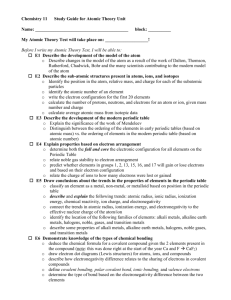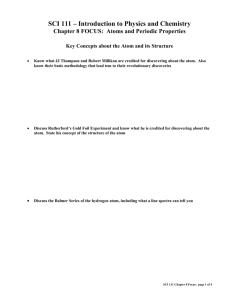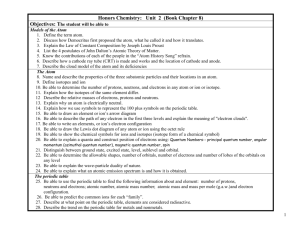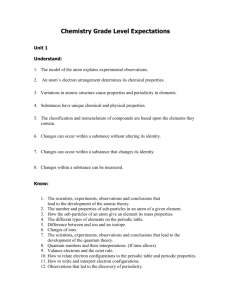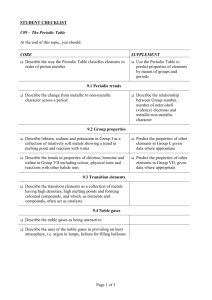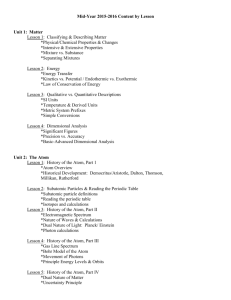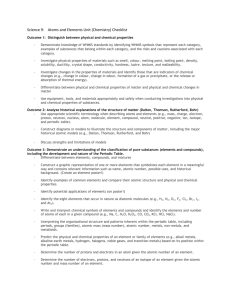Topics list
advertisement
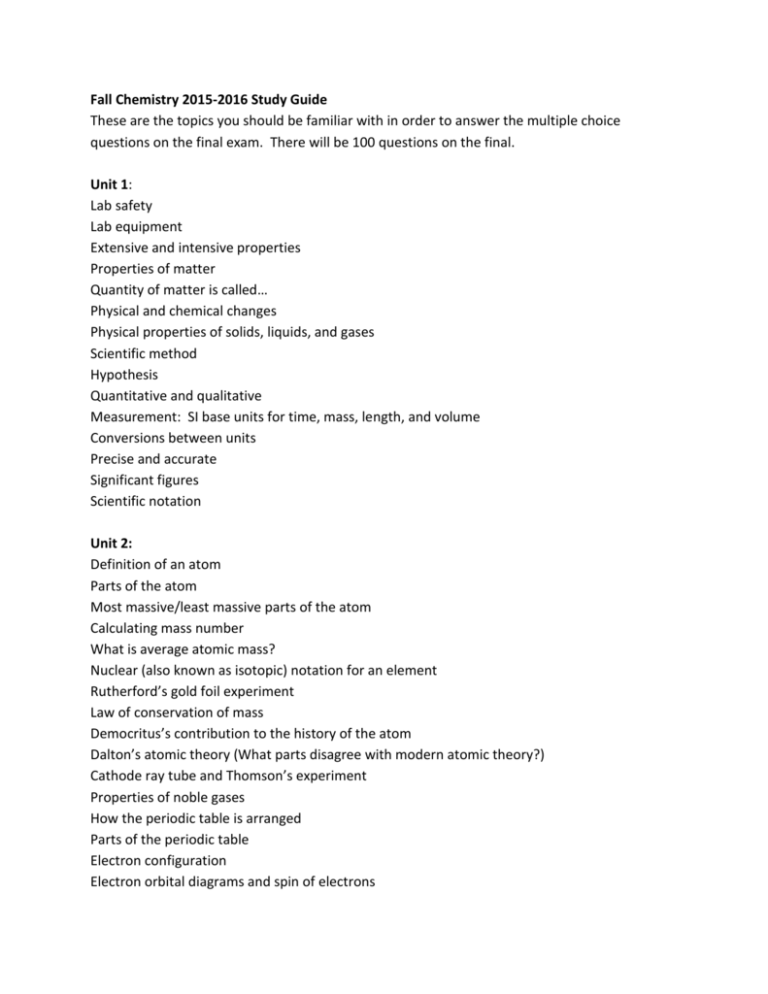
Fall Chemistry 2015-2016 Study Guide These are the topics you should be familiar with in order to answer the multiple choice questions on the final exam. There will be 100 questions on the final. Unit 1: Lab safety Lab equipment Extensive and intensive properties Properties of matter Quantity of matter is called… Physical and chemical changes Physical properties of solids, liquids, and gases Scientific method Hypothesis Quantitative and qualitative Measurement: SI base units for time, mass, length, and volume Conversions between units Precise and accurate Significant figures Scientific notation Unit 2: Definition of an atom Parts of the atom Most massive/least massive parts of the atom Calculating mass number What is average atomic mass? Nuclear (also known as isotopic) notation for an element Rutherford’s gold foil experiment Law of conservation of mass Democritus’s contribution to the history of the atom Dalton’s atomic theory (What parts disagree with modern atomic theory?) Cathode ray tube and Thomson’s experiment Properties of noble gases How the periodic table is arranged Parts of the periodic table Electron configuration Electron orbital diagrams and spin of electrons How is a photon emitted What happens when electromagnetic radiation strikes a metal, and what is the effect called? What do we call the lowest energy state of an atom? Parts of the wave Periods and groups on the periodic table Periodic law Alkali metal, alkaline earth metals, halogens, noble gases Atomic radius, electronegativity, electron affinity, and ionization energy periodic trends Locations of metals, nonmetals, and metalloids on the periodic table Main group elements, lanthanides, actinides, transition elements (also called transition metals) S block, p block, d block, f block Octet rule and noble gases Unit 3: Definition of a compound What is a covalent bond? Properties of covalent and ionic compounds compared to each other Lewis structures VSEPR theory and predicting shape Central atom of Lewis structures (usually the least electronegative atom) Which atoms can form multiple covalent bonds? Which type of bond is a sea of electrons (or electron sea)? Malleable and ductile

